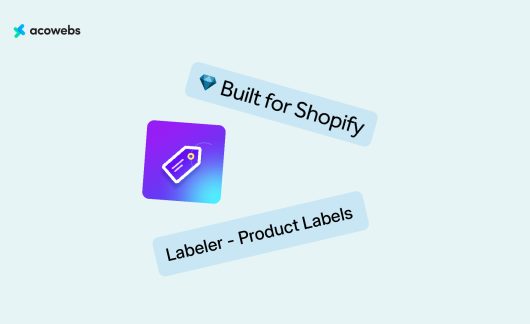You can create a community or start a company blog to market your brand. When it comes to community, the brand not only talks about itself but also listens to what its customers have to say. People who join a community aren’t just readers. They can seek guidance or participate in a discussion.
Owners of eCommerce sites can use communities to build a devoted following for their company and promote it further. Building a community is a strong tool that is free to use. With the evolution of social media and new generations of customers with different ideals, companies have adopted a more community-focused marketing strategy.
Advantages of Starting a Branded Online Community
There are several distinct advantages to building a branded community around your brand. If done correctly, you can turn it into an extremely powerful marketing tool. Building a fan base online is the sole purpose of many social media communities, but there are unique benefits that can be taken advantage of if you create a branded online community. They include:
- Driving product innovation – Your customers have a very large voice and can help drive your company to innovate. If you build a community, it will be easier to get feedback from them. Try to create a community that leaves room for people to talk about what they think of products or services.
- Building brand awareness – People want to buy from brands that have a following online. Branding is all about building trust with people who are unfamiliar with the product or service. By creating an online community where fans can share their experiences with friends or family, you can spread word-of-mouth marketing in which your target market talks positively about the product or service you sell without being paid for it directly.
- Maintain better customer relations – An online community provides an open space for your customers to share their experiences with others. If you are getting lots of comments about how great your product is, then you can use that as marketing material by sharing it on social media sites or even on your website’s blog. You can also post questions and ask for feedback from customers in order to make improvements to current products or come out with new ones.
- Decrease costs – Marketing companies like Revfluence charge hundreds of dollars per month for reputation management services that include community building . By creating an online community, you will be able to promote your brand without having to pay thousands of dollars per year or more.
- Gain insights about existing customers – Asking fans what they want allows you to get further insight into what your current customers are looking for. This will help you to increase sales because you can deliver exactly what they are asking for.
- Get feedback about new products – You may want to test the market first before coming out with an entirely new product line. By creating a community, your customers will be able to give you their opinion on whether or not it is something they would buy or use if it were available in stores or online.
- Providing incentives – Rewards and giveaways are very popular within communities because people like free stuff! You can offer prizes such as money off coupons, complimentary items based on how long someone has been a member of the community, or even cash rewards if they refer a friend who makes a purchase.
- Creating a positive reputation – Many companies have a negative image because their products or services can be expensive or just aren’t very good quality. A branded online community allows you to invite your customers to share their experiences with the world about what they thought of your product. 9. It’s free! The best part of building an online community is how absolutely free it will be for you and your business, especially if you already have a website on which to host it.
Tips for Building a Community Around Your eCommerce Brand
Here are tips and steps you can take towards building an online community around your e-commerce brand:
1. Give it time
As with any type of new endeavor, establishing a successful online community isn’t going to happen overnight. You have to be willing to give it some time and commitment before expecting anything in return for your effort. However, once you do start seeing results they will likely happen very quickly and most likely surprise you at how much your community thrives.
2. Start with your team

While it may sound like a great idea to create a branded online community where all of your customers can talk with each other, sometimes it is best to start small by inviting members from within your company such as fellow employees or maybe even some loyal customers who make repeat purchases with you on a regular basis such as monthly or yearly subscriptions.
If you begin with this small group of people, then you will be able to learn the basics about what works and what doesn’t work in order for you to expand the online community later on when needed. You don’t want to spend months building up an e-commerce brand that no one is actually using.
3. Define the purpose and goal
Before building anything online it’s important to know what you want your community to accomplish. Do you just want people to be able to ask questions when they need help? Or do you actually want them to be able to answer other customer questions as well in order for everyone in the community to learn from each other?
You can also use a branded online community as a way for current and potential customers and partners and vendors who work with your business in some way or another can communicate, share ideas about how they can grow together, and provide feedback about where there could be opportunities for improvement in your products/services/branding/etc.
4. Select a platform that is easy-to-use

You’ll want to select a community platform that is not only easy enough for everyone in your company to use, but also one that offers the features and options you need. For example, if you sell clothing items then you will most likely want to create an online community where people can upload photos of themselves wearing specific outfits they purchased from your e-commerce brand and ask questions about how to style it or what type of shoes or accessories would go well with it. This way everyone who uses the platform will be able to find these images and get suggestions on how they can wear their own clothes as well.
5. Build a member profile/profile pages
Whether or not you want to offer this feature in your online community really just depends on how much you want to encourage others to use it. If you are just starting out with a smaller community that only has members who work for your company, then I wouldn’t worry about building member profiles since they won’t really be able to share any details about their personal life.
However, if you have an online community where people can join from outside of your company and/or if you plan on expanding the community’s user base in the future so there will be more options available for users to contribute content, then I would strongly recommend adding this option as part of the community platform solution you select.
6. Develop rules and norms
You can skip this step and wait until someone starts breaking your rules before creating some – which won’t be long. However, if you develop rules and norms ahead of time this will minimize the chances of inappropriate activities taking place in your community since people will already know what is expected of them before joining.
You can create two types of rules to help manage the type of content that users contribute:
- Content related rules (no nudity, no swearing, etc.), and
- Interaction related rules
For example, you may want to let all members know how they should demonstrate politeness when posting or replying to one another by following established etiquette standards like including a signature (sign-off) at the end of each message containing their name and/or company name along with some other details about their personal experience working with your brand.
7. Welcome new members personally

This step is crucial if you want to kick-start the community and get it moving in the right direction. You’ll need to let all new members know why they should invest their time and effort into engaging with others inside of your community by welcoming them personally as soon as they join. Again, if you have a smaller group initially then this will most likely mean that anyone who joins will be greeted by one person (e.g., you).
However, if your online community has already grown since its launch then you may want to assign someone else on your team the responsibility of welcoming new members so there isn’t any overlap or confusion about how everyone should be greeting them each time they join.
8. Embrace a social cause that extends customer impact
People love to feel like they are making a difference in the world, especially if it has something to do with their favorite brands or causes. For example, you may want to get involved with one of your local community organizations by holding an event at their venue or donating some of your products for them to give away as prizes.
If you don’t have any personal connections with community organizations but would still like to find ways to help others outside of your company, then you can select a nonprofit organization and offer monetary donations in exchange for referrals from members who participate in relevant activities within your online community (e.g., upload photos/videos).
9. Involve your customers via video

Since people typically use online communities as a way to connect with others who share similar interests, then adding video content that features your customers talking about their customer experience with you will help build stronger connections. You can start by asking them questions that they would most likely be curious to know the answers to (e.g., How did you discover us? What made you want to invest in our brand?). Then, once you have established what topics they are most interested in hearing from other people on your team about, schedule some time each week for one of your employees – or even yourself – to present information related to all of those topics so users can see how various members from different departments interact with each other and discuss different aspects of your company culture.
10. Create an educational blog and email content

Returning back to the idea of getting your community members involved via video, it’s a good idea to create an educational blog that features posts with videos designed to help teach people things they can do on their own (e.g., make a budget), as well as provide tips and/or tricks for using your products (e.g., how to cleanse pores).
Also, if you send out emails or newsletters containing information related to new product launches or upcoming events then include some teaser-style information about those items within the body of the message itself along with a link that will allow recipients to view more details online inside of your community (e.g., “Introducing our new line of ‘Intensive Anti-Aging’ products”).
Then, include a call-to-action at the end of your email message to encourage readers to join your online community in order to be the first ones notified about when/where you will be launching new items, what they should bring with them if they come to an event, how they can get access to giveaways or free samples, etc.
Acowebs are developers of many leading WooCommerce plugins in the market. One of the leading WooCommerce plugins from Acowebs is the WooCommerce Discount Rules which will help you with discounts on products in your store. There is also a free version of this plugin that can be downloaded from WordPress named WooCommerce Dynamic Pricing which is currently being used by nearly 10,000 users.












 Login
Login
 Cart
Cart







